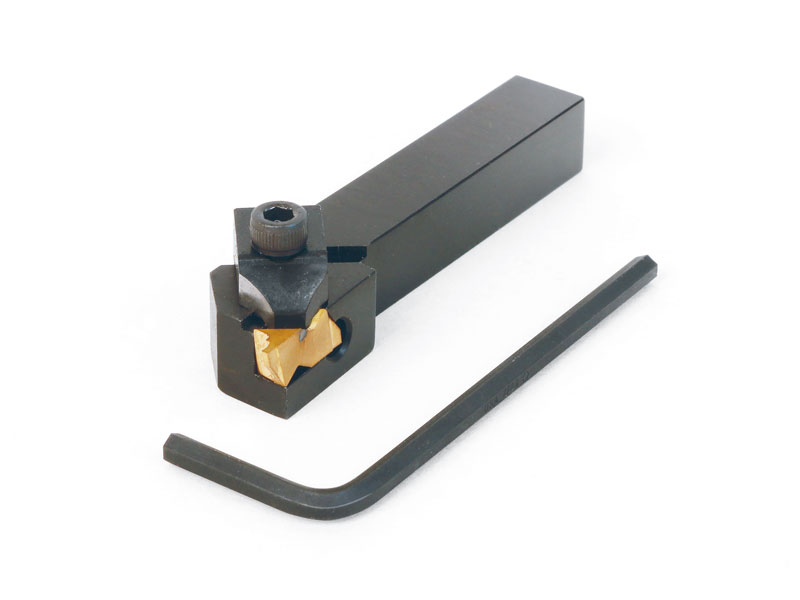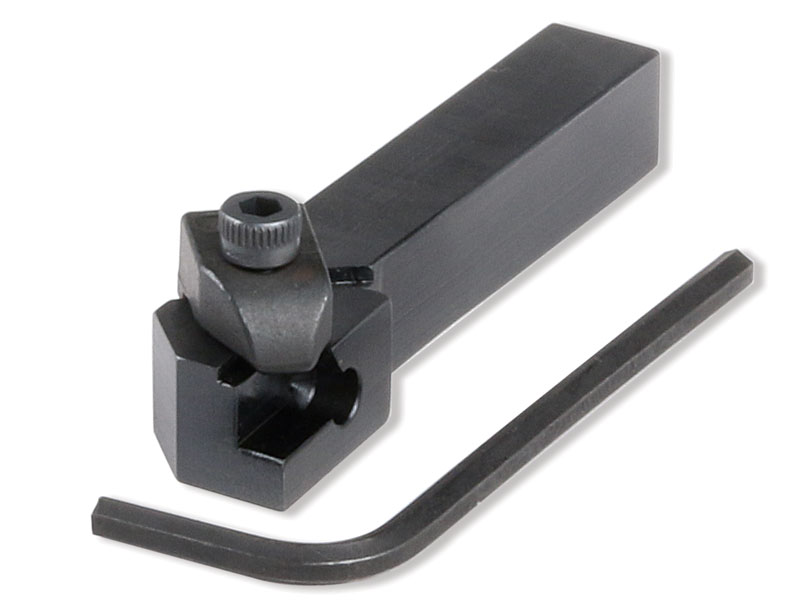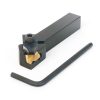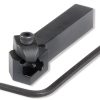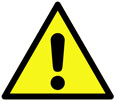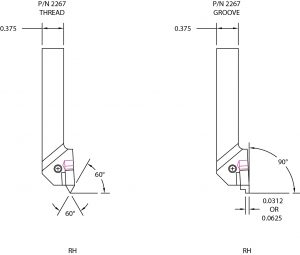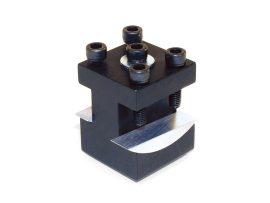Threading/Grooving Carbide Insert Tool Holder
Due to the variety of insert types and their cost, the holder is sold separately without inserts, allowing you to select only the specific inserts you need. The holder includes a clamp, 6-32 hold-down screw, and a 7/64″ hex key for secure setup.
⚠️ CUSTOMER NOTICE — July 8, 2020
We’ve identified a potential issue affecting a small number of our Threading/Grooving Carbide Insert Tool Holders. Specifically, the cutting insert may not be securely clamped in place.
When tightening the clamp, the inside corner of the clamp may contact the step adjacent to the insert pocket, preventing full engagement with the clamping notch on the insert. This was caused by an early in-house clamp design that mistakenly used symmetrical angles on both sides of the clamp nose, rather than the intended asymmetrical design. This issue has since been corrected.
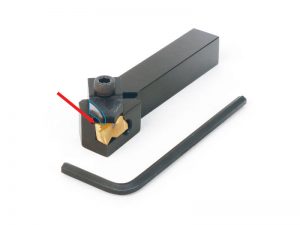
To resolve the issue immediately:
-
Use a bench grinder or file to slightly grind down the back side of the clamp (see blue circle in the image).
-
This will allow the clamp tip to clear the step (indicated by the red arrow), ensuring full contact and proper clamping of the insert.
Fewer than a dozen affected clamps were shipped. If you received one of these defective clamps, please contact us immediately. We will replace any faulty clamps free of charge.
⚠️ CAUTION: Chips coming off the carbide inserts can be very HOT! Use extreme caution. Carbide inserts can also shatter. For these reasons, proper protective eyewear and clothing are especially important when using these tools. Materials like tool steel can form long, stringy chips that wrap around the part. Use a chip brush frequently, or pause machining to clear debris. Accumulated chips, especially when hot, can ignite. Keep the area around the cutter clean and free of chip buildup.
4 interest-free payments of $16 with Affirm. Check your purchasing power
| Insert Holder Material | Case Hardened Steel |
|---|---|
| Body Coating | Black Oxide |
Related products
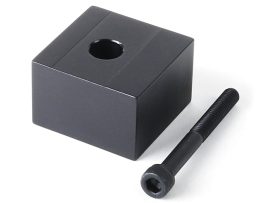

Cutoff Tool Rear-Mounting Block
For those who already own a standard cutoff tool holder, this spacer block will lift the cutoff tool holder the height of the blade, allowing the blade to be mounted upside down and used on the back side of the … Continued
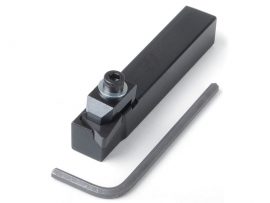

Ceramic Insert Tool Holder
Designed for cutting hard materials like tool steel, this ceramic insert tool holder features a triangular insert mounted at a negative rake angle. The downward tilt of the insert provides proper side clearance, allowing you to use all six cutting edges—three per side—before needing a replacement. The 3/8" shank fits Sherline’s P/N 7600 tool post (not included). A clamp, hold-down screw, and 3/32" hex key are included for secure installation. Replacement inserts are available as (P/N 22659).
Why Use Ceramic Inserts?
Ceramic cutting tools are a powerful addition to the modern machinist’s toolbox. Though more brittle than high-speed steel (HSS) or carbide, ceramic inserts excel at cutting hardened steels and other tough materials, especially at higher spindle speeds. This makes them ideal for jobs that would otherwise be extremely difficult or impossible—such as turning down the shank of an end mill.
This insert’s large nose radius helps achieve an excellent surface finish, particularly when profiling.
-
Each insert offers six usable cutting edges:
-
Rotate 120° to access a new edge (3 per side), then
-
Flip the insert for 3 more cutting points on the opposite face
-
-
In comparison, traditional carbide inserts offer only 2–4 cutting edges, making ceramic inserts cost-effective over time, despite the higher upfront cost.
Usage Notes & Safety Information
-
Ceramic inserts are brittle and should be used with proper technique to avoid chipping or breakage.
-
Caution: Chips produced during cutting can be extremely hot—even red-hot. Use protective eyewear, gloves, and fire-safe clothing when operating.
-
Some materials, such as tool steel, may form long, stringy chips that wrap around the part ("bird’s nest" effect).
Use a chip brush and stop the machine frequently to clear chips. These chip clusters can ignite if they come in contact with hot chips.
